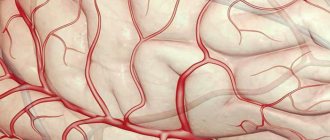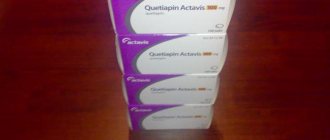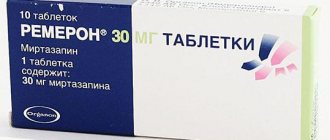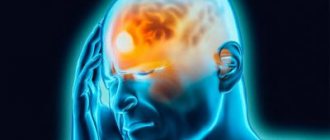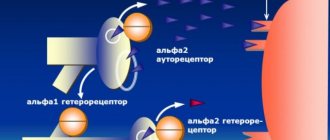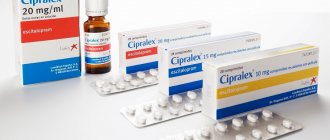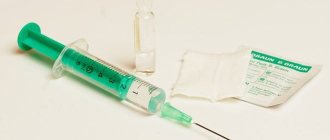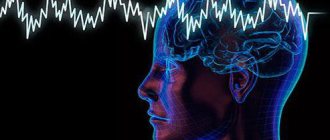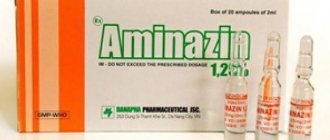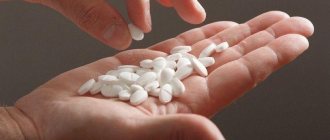Pharmakinetic properties
The drug "Recognan" is well absorbed when administered orally. After its use, rapid absorption occurs. This drug is well metabolized in the intestines and liver, but after taking it, the concentration of choline in the blood increases significantly. The active substance penetrates the brain and helps restore its structure. Citicoline is excreted from the body in small quantities; most of it is used to restore damaged brain cells.
Mode of application
You should strictly adhere to the recommended dosages and duration of treatment courses for the full effect of Recognan.
The solution in vials is used orally during meals. Before use, it can be diluted in water (no more than 100 ml). Indicated only in the absence of bulbar disorders in the patient! The same applies to the sachet form.
Injection forms are used intravenously (intramuscular use is allowed). Recognan is diluted in any isotonic solvent (saline solution is most often used). Drip administration is preferable due to better tolerability. Prolonged intramuscular use in the same anatomical area can lead to abscesses. Injectable forms are more often used at the stage of inpatient care or in the presence of bulbar disorders. The course of therapy is 10-14 days. Next, it is recommended to switch to oral forms (sachets, solution in bottles). Doses depend on the specific situation.
For ischemic strokes, as well as in the acute period of TBI, it is recommended to use 1 gram of Recognan (10 ml of syrup or 1 sachet) 2 times a day. The course of treatment is long, the minimum is 40-45 days.
For rehabilitation, including after hemorrhagic brain damage, Recognan is used in a dose of 500 to 2000 milligrams. Treatment is also long-term and depends on the severity of the disease, as well as the effectiveness of the drug.
Pregnancy
sufficient data on the use of Recognan in pregnant women. Although animal studies have not revealed a negative effect, during pregnancy the drug Recognan is prescribed only in cases where the expected benefit to the mother outweighs the potential risk to the fetus. When prescribing Recognan during lactation, women should stop breastfeeding, since there is no data on the excretion of citicoline in human milk.
Pharmacokinetics
Suction. Citicoline is well absorbed when taken orally. Absorption after oral administration is almost complete, and bioavailability is approximately the same as after intravenous administration.
Metabolism. The drug is metabolized in the intestines and liver with the formation of choline and cytidine. After administration, the concentration of choline in the blood plasma increases significantly.
Distribution. Citicoline is widely distributed in brain structures, with rapid incorporation of choline fractions into structural phospholipids and cytidine fractions into cytidine nucleotides and nucleic acids. Citicoline penetrates the brain and is actively incorporated into cellular, cytoplasmic and mitochondrial membranes, forming part of the fraction of structural phospholipids.
Excretion. Only 15% of the administered dose of citicoline is excreted from the human body: less than 3% by the kidneys and through the intestines and about 12% by exhaled air.
The excretion of citicoline in urine can be divided into 2 phases: the 1st phase, lasting about 36 hours, during which the rate of excretion decreases rapidly, and the 2nd, during which the rate of excretion decreases much more slowly. The same is observed in exhaled air - the rate of elimination decreases rapidly after approximately 15 hours and then decreases much more slowly.
Analogues and generics
Citicoline is a popular active ingredient and is often used to create a wide variety of nootropic drugs by both domestic and foreign manufacturers. The average cost of 10 sachets of medicine (for 10 doses) is 1200 rubles. One bottle of 30 ml costs from 400 rubles. Naturally, this price cannot be called low. Currently, in addition to Recognan, you can find its analogues in pharmacies at the following prices:
“Proneiro” (Ukraine, Galichfarm) – 45 ml bottle for 600 rubles;
"Ceraxon" (Spain, Ferrer International) - the average price of 10 sachets is 1,500 rubles.
All analogues of any name are available in the form of syrup, sachets or ampoules. There are no citicoline tablets on the market.
As for Recognan itself, it is a Spanish-made drug, and it occupies a strong second place after the most famous citicoline on the market, Ceraxon. It enjoys well-deserved popularity and justifies its cost by truly improving the functioning of brain neurons.
Rate this article:
- 4
Total votes: 62
special instructions
When using the drug, you should remember the following features:
During storage at low temperatures, crystals form in the syrup, which do not affect the effect of the drug. Prolonged exposure to room temperature leads to the dissolution of the crystals.
When taking Recognan, you must refrain from driving and other potentially hazardous activities. Citicoline can enhance the effect of levodopa. The drug should not be used simultaneously with the prescription of meclofenoxate.
Contraindications for use
The drug "Recognan", despite the fact that it contains natural ingredients, still has certain contraindications. These include:
- hereditary rare diseases;
- hypersensitivity to individual components of the drug;
- fructose intolerance.
In addition, it is worth considering that the drug is contraindicated for children under 18 years of age.
During its use, special care must be taken when performing hazardous activities, since mental reactions may be somewhat reduced. When prescribed during lactation, breastfeeding should be discontinued
Pregnant women can only be prescribed if the benefit to the woman outweighs the possible risk to the fetus.
Side effects
Allergic reactions (rash, skin itching, anaphylactic shock), headache, dizziness, feeling of heat, tremor, nausea, vomiting, diarrhea, hallucinations, swelling, shortness of breath, insomnia, agitation, loss of appetite, numbness in paralyzed limbs, changes in the activity of liver enzymes . In some cases Recognan can stimulate the parasympathetic system and also have a short-term effect on blood pressure. If any of the side effects listed in the description get worse or any other side effects not listed in the description are noticed, you should tell your doctor.
Domestic analogues
There are more affordable medications than Recognan. Domestic analogues are in no way inferior to expensive medicines. These include:
- "Olatropil";
- "Semax";
- "Calcium Gopanthenate" and other equally effective drugs.
"Olatropil" is a combination product, the effectiveness of which is achieved due to the presence of two active components, namely: piracetam and aminalone.
This drug helps to increase mental activity, improve memory, and reduce irritability. Like the drug Recognan, the reviews of analogues are simply excellent. They were highly appreciated by leading doctors and patients who have already experienced all the benefits of such products. Another good domestic analogue is Semax drops. This drug is prescribed for mental disorders and excessive nervous tension, which can be observed with vascular lesions of the brain, previous traumatic brain injuries, and circulatory disorders.
“Calcium Gopanthenate” is used to treat decreased mental and physical performance, epilepsy, impaired brain activity, and various pathologies of the nervous system. This remedy is very well tolerated by patients and has virtually no contraindications. When taken, a sedative effect and stimulation of brain function are observed. All this allows you to quickly eliminate existing disorders of the nervous system.
This is how the instructions for use recommend using Recognan. We have reviewed reviews, analogues and characteristics of this medication, but remember that before each treatment you must consult a doctor, as some drugs can be harmful to health.
Reviews
“The medicine was prescribed to my father after he suffered a stroke. I took it for almost three months, now I don’t feel numbness in my hands, I can control my fingers and hands better, I can remember better. The drug is quite good, but it was hard for us to get it.”
Vladimir, 54 years old
“After the accident, I was admitted to the hospital with a traumatic brain injury and was prescribed Citicoline to take for a month. At the hospital itself they gave me injections and once a drip, then I took syrup. I don’t seem to have noticed anything wrong, I feel much better, but the drug was one of the most expensive on the entire list of necessary medications.”
Evgeniy, 41 years old
“The child was prescribed a solution for internal use, since he has a congenital head injury and also a cyst in the brain. The daughter tolerated the Citicoline injections very poorly, did not want to sleep at night, her back and legs were constantly tense, she was capricious and screaming. As a result, we visited another doctor and chose a different medicine.”
Angelina, 32 years old
Author of the article: Matveeva Vladislava Anatolyevna, Master of Medical and Pharmaceutical Chemistry
Source: depressio.ru
Available forms and dosage regimen
This drug is intended for both conscious and comatose patients. That is why the drug is produced in several forms, both for internal use and for parenteral routes of administration. The following options can be purchased at the pharmacy:
- solution for internal use, with strawberry flavor. Packaged in 100 ml bottles, with a dosage of 100 mg/ml;
- the same solution, only packaged in sachets or special sachets of 10 ml;
- solution for parenteral (intravenous and intramuscular) administration. One ampoule contains 4 ml of solution containing 500 mg of citicoline. There is also a double dosage, in which the same 4 ml ampoule contains 1 gram of citicoline, or 1000 mg.
One sachet contains 1 g of active substance, per milliliter of liquid - 100 mg. The liquid and contents of the sachets are taken orally either during meals or between meals. The medicine is dissolved in water, but you can drink it anyway, since the strawberry taste is quite pleasant.
For severe neurological diseases, such as stroke, the patient is given one sachet twice a day. You need to be treated for at least 6 weeks. During the recovery period, as well as for dementia and vascular pathology, the dose can range from 5 to 20 ml per day.
As for injections, injections can be used both intramuscularly and intravenously. For stroke in the acute stage, the maximum dosage is 4 ml twice a day, with a substance content in the ampoule of 1000 ml/mg.
The manufacturer especially notes that due to the physical characteristics of the active substance, when stored at low temperatures, powder and crystals may precipitate, which then dissolve. These crystals do not affect the quality of the drug if it is taken orally. But when Recognan is used for intravenous and intramuscular administration, such a drug is not permitted for use.
Contraindications
Like all drugs whose active substance is a precursor to the structural components of the body, there are few contraindications for taking this medicine.
These are allergies and hypersensitivity, intolerance to fructose, which is added to the syrup when consumed enterally, as well as vegetative-vascular dystonia with a predominance of the tone of the parasympathetic system.
This is manifested by symptoms such as bradycardia and a tendency to lower blood pressure, attacks of dry cough and lack of air, a feeling of a lump in the throat, chilliness and sweating, low body temperature, decreased appetite and increased body weight.
The drug is not indicated for use in children and adolescents under 18 years of age. This is not due to the presence of special contraindications, but to the lack of necessary research.
Side effect
According to doctors, the use of Recognan rarely causes side effects. The official instructions indicate that their frequency does not exceed one case per 10,000 patients. Therefore, according to the official classification, they are all very rare. Of these, the following violations were noted:
- rash and skin itching;
- cephalgia;
- nausea and vomiting;
- insomnia;
- feeling of heat;
- increased liver transaminases in biochemical blood tests;
- short-term decrease in pressure;
- loss of appetite.
Usually, all these effects quickly disappear with further use of the drug. But if they persist, you must inform your doctor about this.
Recognan
The same thing is observed in exhaled air - the rate of excretion decreases rapidly after about 15 hours. And then decreases much more slowly.
Indications for use: Indications for use of the drug Recognan are: acute period of ischemic stroke (as part of complex therapy); recovery period of ischemic and hemorrhagic strokes; traumatic brain injury, acute (as part of complex therapy) and recovery periods; cognitive and behavioral disorders in degenerative and vascular diseases of the brain.
Directions for use: Recognan orally, during meals or between meals. Before use, the drug can be diluted in a small amount of water (120 ml or 1/2 cup). Recommended dosage regimen. 500–2000 mg per day (5–10 ml 1–2 times a day or 1 pack (1000 mg) 1–2 times a day). The dosage and duration of treatment depend on the severity of the symptoms of the disease. Special groups of patients Elderly. When prescribing Recognan to elderly patients, no dose adjustment is required. Instructions for using the dosing pipette included with the bottle Place the dosing pipette in the bottle (the pipette piston is completely lowered). Carefully pull the plunger of the dosing pipette until the solution level is equal to the corresponding mark on the pipette. Before use, the required amount of solution can be diluted in 1/2 glass of water (120 ml). After each use, it is recommended to rinse the dosing pipette with water. Recommendations for the use of Recognan in sachets Take a sachet of Recognan®, 1000 mg, by the edge and shake. Tear off the edge of the bag in the place indicated by the dotted line. Drink the contents of the sachet immediately after opening or dissolve in 1/2 glass of drinking water (120 ml) and drink.
Side effects: Allergic reactions (rash, skin itching, anaphylactic shock), headache, dizziness, feeling of heat, tremor, nausea, vomiting, diarrhea, hallucinations, swelling, shortness of breath, insomnia, agitation, loss of appetite, numbness in paralyzed limbs, changes liver enzyme activity. In some cases Recognan can stimulate the parasympathetic system and also have a short-term effect on blood pressure.
Contraindications: Contraindications to the use of the drug Recognan are: hypersensitivity to any of the components of the drug; patients with severe vagotonia (predominance of the tone of the parasympathetic part of the autonomic nervous system); rare hereditary diseases associated with fructose intolerance; children under 18 years of age (due to the lack of sufficient clinical data). With caution: there is no information on relative contraindications when using the drug.
Pregnancy: There are no sufficient data on the use of Recognan in pregnant women. Although animal studies have not revealed a negative effect, during pregnancy the drug Recognan is prescribed only in cases where the expected benefit to the mother outweighs the potential risk to the fetus. When prescribing Recognan during lactation, women should stop breastfeeding, since there is no data on the excretion of citicoline in human milk.
Interaction with other drugs: Recognan enhances the effects of levodopa. Should not be prescribed concomitantly with drugs containing meclofenoxate.
Overdose: Cases of overdose of Recognan have not been described.
Storage conditions: At a temperature of 15–25 °C. Keep out of the reach of children.
Release form: Recognan - oral solution 100 ml. 30 ml of the drug in bottles. A bottle with a dosing pipette is placed in a box made of cardboard. Bags. 10 ml of the drug in bags made of multilayer combined material (PET-LDPE-aluminum-PE). Sachets in quantities of 5 or 10 pcs. placed in a box of cardboard.
Composition: Recognan contains: active substance: citicoline monosodium salt 10.45 g (equivalent to 10 g of citicoline). Excipients: sorbitol - 20 g; glycerol - 5 g; propylene glycol - 1.04 g; methyl parahydroxybenzoate - 0.16 g; propyl parahydroxybenzoate - 0.04 g; potassium sorbate - 0.14 g; sodium citrate dihydrate - 0.6 g; sodium saccharinate - 0.02 g; Azorubine dye (E122) - 0.002 g; strawberry flavor FRESA S. 1487S – 0.04 g; citric acid - up to pH 6; purified water - up to 100 ml
Additionally: In the cold, a small amount of crystals may form due to temporary partial crystallization of the preservative. With further storage under recommended conditions, the crystals dissolve within several months. The presence of crystals does not affect the quality of the drug. Influence on the ability to drive vehicles and machinery. During the treatment period, care must be taken when performing potentially hazardous activities that require increased attention and speed of psychomotor reactions (driving a car and other vehicles, working with moving mechanisms, working as a dispatcher, operator, etc.).
Pharmacodynamics
Citicoline, being a precursor of key ultrastructural components of the cell membrane (mainly phospholipids), has a wide spectrum of action - it promotes the restoration of damaged cell membranes, inhibits the action of phospholipases, prevents the excessive formation of free radicals, and also prevents cell death by affecting the mechanisms of apoptosis. In the acute period of stroke, it reduces the volume of damage to brain tissue and improves cholinergic transmission. In case of TBI, it reduces the duration of post-traumatic coma and the severity of neurological symptoms, in addition, it helps to reduce the duration of the recovery period.
Citicoline is effective in the treatment of cognitive, sensory and motor neurological disorders of degenerative and vascular etiology.
In chronic cerebral ischemia, citicoline is effective in treating disorders such as memory impairment, lack of initiative, and difficulties arising in performing daily self-care activities. Increases the level of attention and consciousness, and also reduces the manifestations of amnesia.
Price
Recognan is available with a doctor's prescription. Prices for the product can greatly depend on the markup of the pharmacy chain and wholesale suppliers and vary significantly by region. The drug is quite new on the market; there is no current data on the drug. Prices will be confirmed later. Average prices will be no higher than:
Oral solution, 100 mg/ml, 30 ml bottles, 1 bottle. 610-820 rubles. Oral solution (sachets), 100 mg/ml, 10 ml sachets, package No. 10. 1300-1620 rubles. Solution for intravenous and intramuscular administration, 0.125 mg/ml, 4 ml ampoules, 5 ampoules. 620-840 rubles. Solution for intravenous and intramuscular administration, 0.25 g mg/ml, 4 ml ampoules, 5 ampoules. 1010-1230 rubles.
You cannot self-medicate. Before taking Recognan, consult your doctor!
Author of the article: Alexey Borisov (neurologist) Practicing neurologist. Graduated from Irkutsk State Medical University. Works in the faculty clinic of nervous diseases. Read more…
Compound
Recognan contains: active substance: citicoline monosodium salt 10.45 g (equivalent to 10 g of citicoline). Excipients: sorbitol - 20 g; glycerol - 5 g; propylene glycol - 1.04 g; methyl parahydroxybenzoate - 0.16 g; propyl parahydroxybenzoate - 0.04 g; potassium sorbate - 0.14 g; sodium citrate dihydrate - 0.6 g; sodium saccharinate - 0.02 g; Azorubine dye (E122) - 0.002 g; strawberry flavor FRESA S. 1487S – 0.04 g; citric acid - up to pH 6; purified water - up to 100 ml
Sources:
https://protabletky.ru/recognan/ https://www.medcentre24.ru/medicamenty/rekognan.html?page=2 https://www.medcentre.com.ua/medicamenty/rekognan.html?page=1

